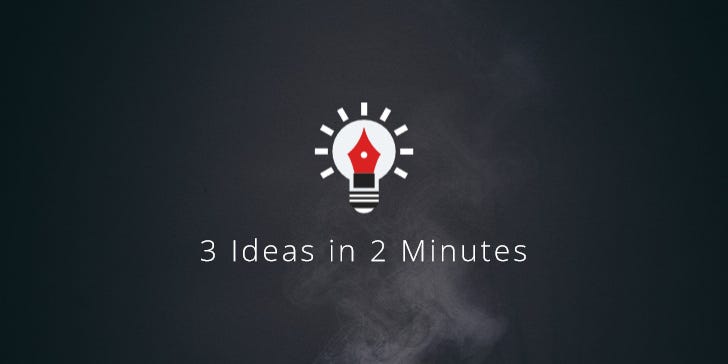#213: Analytic Spectrum, Pareto Efficiency Analysis & Paralysis by Analysis
3 Ideas in 2 Minutes on (Over)Analysing
I. Analytic Spectrum
What a terribly off-putting word analysis can be. Partly because we have a hard time grasping what it even means. At its core, though, analysis is about breaking down complex matters into manageable parts to examine them. The Analytic Spectrum breaks the dreaded word down into four categories:
Descriptive Analysis: Who? What? Where? How?, e.g. breaking down newsletter stats, describing how many people visited when and from where.
Explanatory Analysis: Why?, e.g. identifying the use of the word analysis in your headline as the cause for low traffic.
Evaluative Analysis: So what? What does it mean?, e.g. examining what measures could lead to an improvement in traffic, such as trying out clickbait headlines.
Estimate Analysis: What happens next?, e.g. based on the trial, forecasting the development of website traffic if you switched to clickbait headlines altogether.
All four differ in their time focus. Descriptive analysis is more reactive, while estimate analysis is proactive. While descriptive analysis relies heavily on data, estimate analysis is driven by concepts since the future data doesn’t exist yet.
Source: Randy Pherson: Why Should People Believe What I Say?
II. Pareto Efficiency Analysis
In 1879, Italian economist Vilfredo Pareto discovered that 20% of causes/input are responsible for 80% of effects/output. 80% of IT problems, for example, are solved by only 20% of solutions. 20% of IT staff solve 80% of all IT problems. Yes, it’s the famous 80/20 rule.
You can also apply it to the art of making recommendations. By using a Pareto Efficiency Analysis. It can be an intuitive trap to assume that a single solution fixes a problem. Sometimes a combination of several options is the best way forward. But which ones? Using the Pareto Principle, we can assign a score to our potential options based on how effective we deem them to be. Proposals are then rank-ordered with the top 20% of solutions considered to be of the greatest benefit.
Surely, there’s no guarantee this will work. Results depend on the validity of your scoring. How far available resources stretch is another factor. But it’s certainly a better option than rolling the dice if you’re ever forced to make a choice, and you lack relevant data.
👉 This concept is taken from my essay on Making Recommendations: 5+2 Principles for Decision-Making.
III. Paralysis by Analysis
We’ve all been there. A Danish ghost appears and demands that you avenge your father. Like in Shakespeare’s Hamlet. Throughout the play, the titular character is consumed by indecisiveness and inaction. Should he get payback for his dad’s murder? If so, how? Hamlet overthinks every possible consequence of his actions, questions its morality and ponders the afterlife. His constant internal debates paralyse him and ultimately lead to tragedy.
This so-called Paralysis by Analysis happens when overthinking or excessive deliberation prevents us from making a decision or taking action. When a person becomes overwhelmed by too much information, numerous options and a plethora of potential outcomes. Instead of making progress, we get stuck in a loop of overthinking, evaluating possibilities and overanalysing a little more before fearing mistakes or imperfect choices.
To overthink or not to overthink? The answer is pretty straightforward. 🐘
Have a great week,
Chris
themindcollection.com

